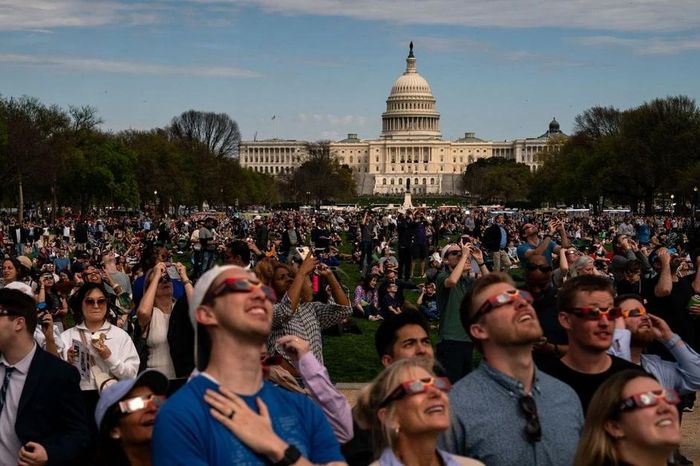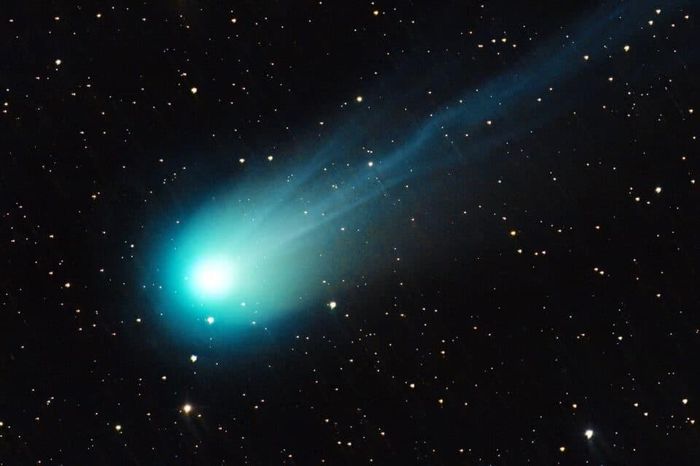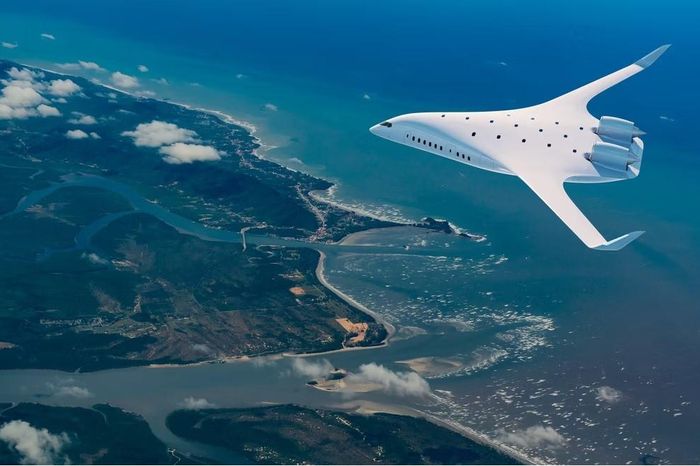The US reaffirmed its intention to send the first Japanese astronaut to the Moon

The above statement was made by President Biden at a press conference after meeting Japanese Prime Minister Fumio Kishida in Washington. The joint statement after the talks between the two leaders emphasized that "the two countries are moving towards exploring our solar system and returning to the Moon". According to an agreement signed between the Japanese Ministry of Science and NASA, the US will allocate two flight slots to explore the lunar surface for Japan in future Artemis missions. NASA expects a flight with Japanese astronauts to be deployed as early as 2028.
NASA Director Bill Nelson stated: "This is the next chapter in the space cooperation relationship between the two countries. America will no longer walk alone on the Moon. We are very proud to accompany Japan." Copy".
For their part, the Japan Aerospace Exploration Agency (JAXA) and Toyota Motor Corporation are developing a lunar rover for crewed operations. Astronauts can control this vehicle without wearing a spacesuit, which will significantly expand the range of movement on the lunar surface.
The Artemis program aims for US astronauts to return to the Moon in September 2026 - the first time in more than 50 years. Historically, all 12 astronauts who have ever set foot on the Moon have been white American men. But on the above flight, the crew will include both women and non-white astronauts.
You should read it
- This is why we always see the Moon always following us
- Synthesize high resolution moon wallpaper on computer
- We may be able to see the 'second moon' in the sky with the naked eye next May
- Unexpected discoveries of the full moon
- Why didn't NASA intend to return to the Moon?
- Why is the moon glowing?
- New technology helps NASA find water, self-sufficient food on the moon
- The biggest super moon in 70 years will appear on November 14
May be interested
- Full Moon facts - Full moon you may not know yet
 full moon sign (full moon) once in each month is a time when we can clearly see things around. in culture and history, the full moon has another meaning, which is the change from month to month for a year. here are the mysteries of full moon - full moon may not be known.
full moon sign (full moon) once in each month is a time when we can clearly see things around. in culture and history, the full moon has another meaning, which is the change from month to month for a year. here are the mysteries of full moon - full moon may not be known. - Discover incredible facts about the Moon
 the image of the moon every night appearing in the sky has become too familiar to us but it is a distant planet hidden from many mysteries waiting for people to discover.
the image of the moon every night appearing in the sky has become too familiar to us but it is a distant planet hidden from many mysteries waiting for people to discover. - This is why we always see the Moon always following us
 if you look a little bit, you will realize that even when walking or driving, the moon and the stars always follow you, while the roadside objects like trees and buildings will gradually retreat to the side. after. why so?
if you look a little bit, you will realize that even when walking or driving, the moon and the stars always follow you, while the roadside objects like trees and buildings will gradually retreat to the side. after. why so? - Synthesize high resolution moon wallpaper on computer
 summarize the moon wallpaper set with multiple resolutions for computers and laptops
summarize the moon wallpaper set with multiple resolutions for computers and laptops - We may be able to see the 'second moon' in the sky with the naked eye next May
 this second moon is actually a comet called atlas (original name is c / 2019 y4) will have the same brightness as our moon and is heading towards earth but not crashing.
this second moon is actually a comet called atlas (original name is c / 2019 y4) will have the same brightness as our moon and is heading towards earth but not crashing. - Unexpected discoveries of the full moon
 this phenomenon is always associated with mystical stories that make scientists headaches.
this phenomenon is always associated with mystical stories that make scientists headaches. - Why didn't NASA intend to return to the Moon?
 in 1969, nasa made history when it completed the mission to set foot on the moon. since then, conquering the moon has become the ambition of many countries around the world. but why has nearly 50 years passed without nasa planning to return to the moon?
in 1969, nasa made history when it completed the mission to set foot on the moon. since then, conquering the moon has become the ambition of many countries around the world. but why has nearly 50 years passed without nasa planning to return to the moon? - Instructions for installing Japanese keyboard for Windows
 google japanese input is a japanese virtual keyboard, which supports users to use and type in japanese immediately after successful installation on the computer.
google japanese input is a japanese virtual keyboard, which supports users to use and type in japanese immediately after successful installation on the computer. - Why is the moon glowing?
 we all know the extremely familiar natural phenomenon: the sun shines in the daytime, the moon shines at night. so, where is the light that the moon glows?
we all know the extremely familiar natural phenomenon: the sun shines in the daytime, the moon shines at night. so, where is the light that the moon glows? - New technology helps NASA find water, self-sufficient food on the moon
 nasa is stepping up the preparation of technologies necessary both in terms of vehicles, people and logistics to serve the purpose of ambitious moon recovery.
nasa is stepping up the preparation of technologies necessary both in terms of vehicles, people and logistics to serve the purpose of ambitious moon recovery.










 Total solar eclipse in North America 'most impressive in hundreds of years'
Total solar eclipse in North America 'most impressive in hundreds of years' The 'Devil's Comet' appears with a total solar eclipse
The 'Devil's Comet' appears with a total solar eclipse Chinese scientists found vulnerabilities in NASA's hypersonic weapons development software
Chinese scientists found vulnerabilities in NASA's hypersonic weapons development software Tens of millions of people await the total solar eclipse in North America on April 8
Tens of millions of people await the total solar eclipse in North America on April 8 The Soyuz spacecraft returned from the ISS, landing in Kazakhstan
The Soyuz spacecraft returned from the ISS, landing in Kazakhstan FAA 'green light' for JetZero's 'mono-wing' aircraft
FAA 'green light' for JetZero's 'mono-wing' aircraft